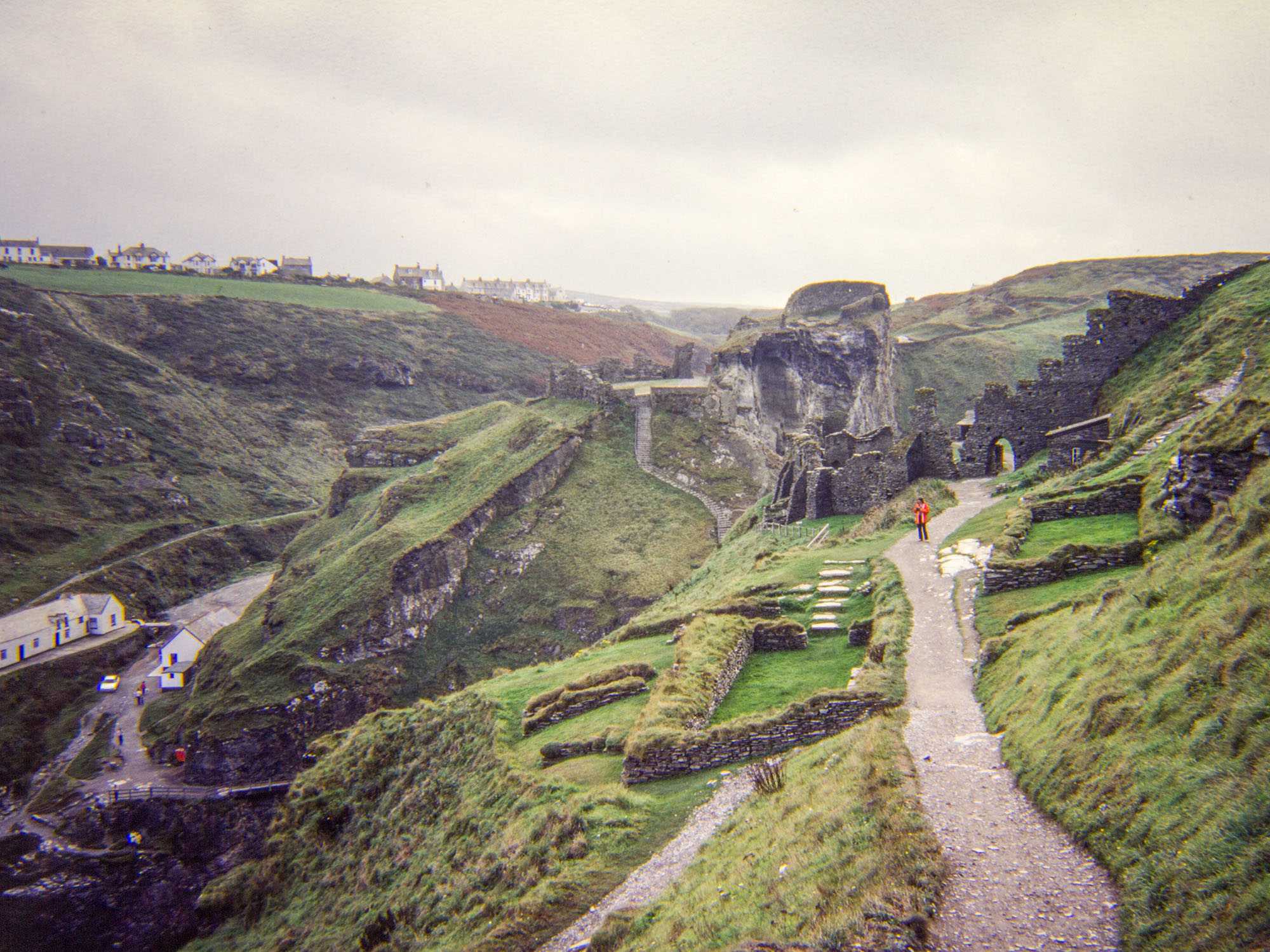Perched on the rugged cliffs of North Cornwall, England, Tintagel Castle is a site steeped in myth and mystery. This medieval fortification is said to be the birthplace of the legendary King Arthur, making it a place of great interest for history enthusiasts and Arthurian legend aficionados alike.
Get your dose of History via Email
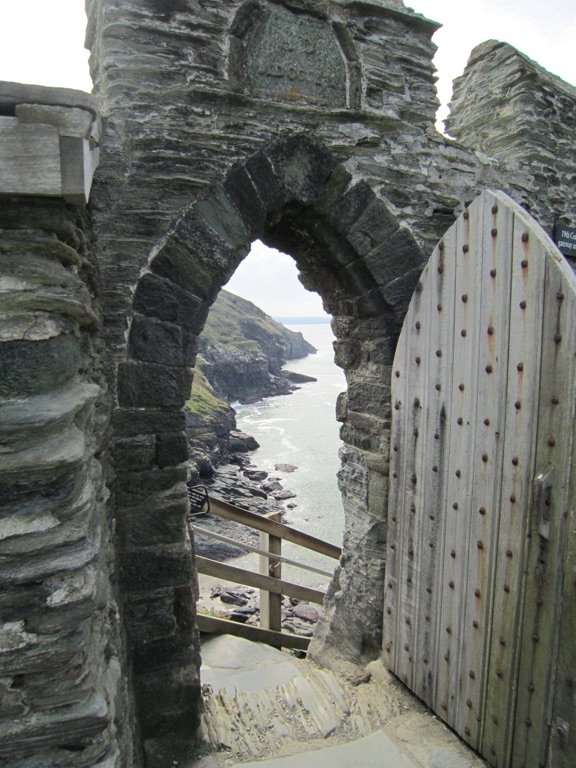
Historical Background
Tintagel Castle’s history dates back to the Roman era, but it gained prominence in the 5th and 6th centuries during the Dark Ages. The castle we see today was built by Richard Earl of Cornwall in the 13th century, but archaeological evidence suggests that the site was a significant fortified settlement long before this time. The castle’s association with the Arthurian legend comes from Geoffrey of Monmouth’s 12th-century pseudo-historical account “Historia Regum Britanniae” (History of the Kings of Britain), where he named it as Arthur’s birthplace.
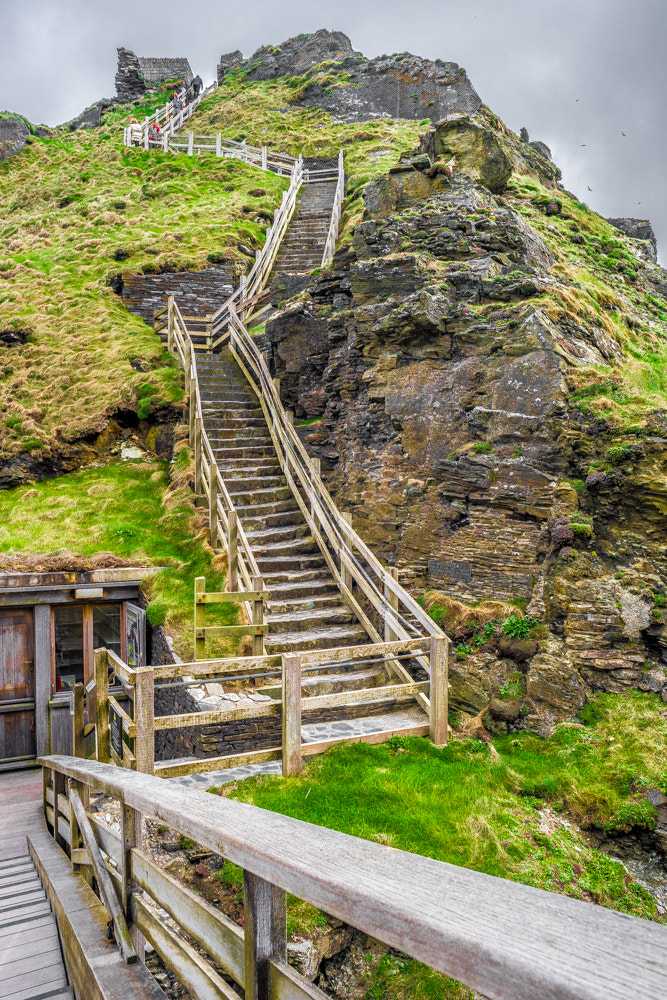
Architectural Highlights
The castle’s construction is a testament to the architectural prowess of the medieval period. Built on a peninsula with sheer cliffs on three sides, the castle was naturally protected from invaders. The remaining ruins show a complex of walls, buildings, and courtyards, with the Great Hall being the most significant surviving structure. The castle was built using local slate, which was readily available from the surrounding cliffs. The castle’s design took advantage of the natural landscape, with buildings constructed on the highest points to provide a vantage point over the surrounding sea and land.
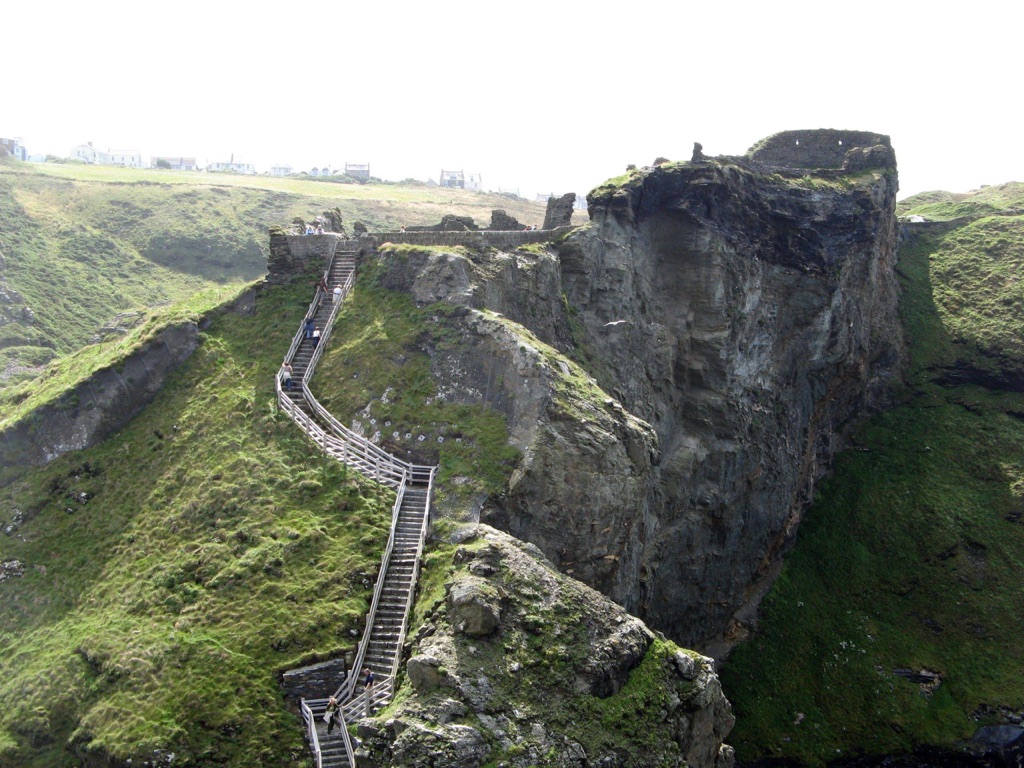
Theories and Interpretations
While Tintagel Castle is most famous for its Arthurian connections, archaeological evidence suggests that it was a site of significant activity long before the medieval period. Excavations have uncovered remains of luxury goods from the Mediterranean, indicating that the site was a prosperous trading settlement during the Dark Ages. The castle’s remote location and natural defences would have made it an ideal stronghold for a powerful ruler, which lends some credence to the theory that it could have been the seat of the historical King Arthur if such a figure existed. Radiocarbon dating of the site has confirmed occupation during the 5th and 6th centuries, the period in which Arthur is said to have lived.
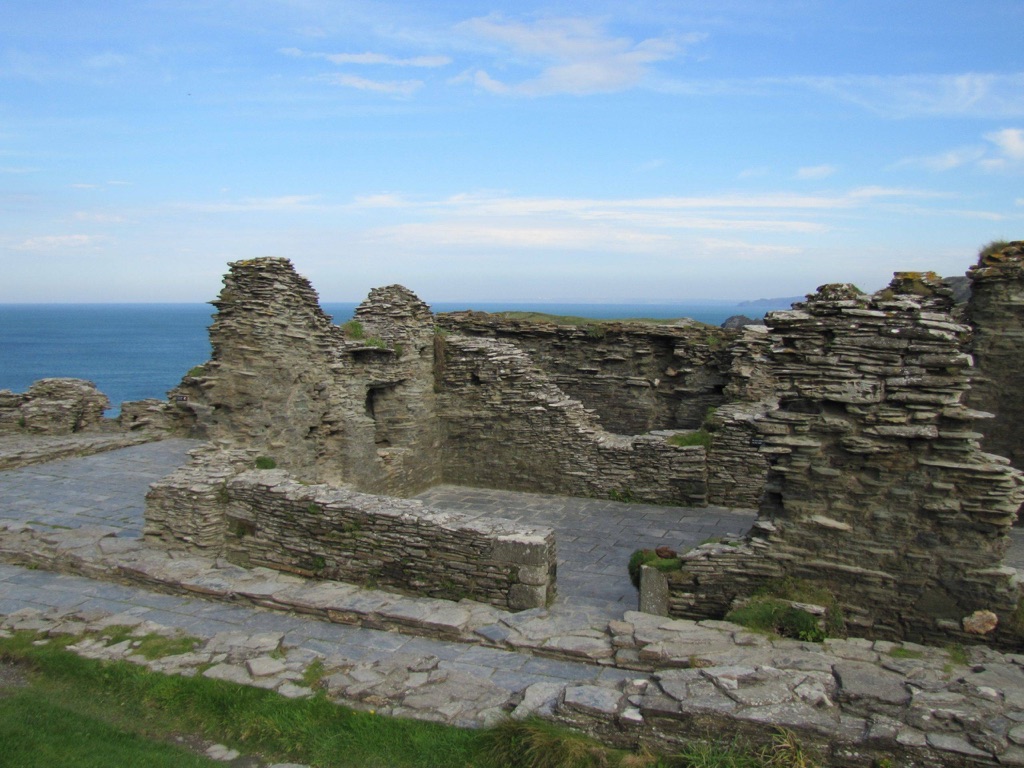
Good to know/Additional Information
Today, Tintagel Castle is managed by English Heritage and is open to the public. Visitors can explore the ruins, take in the stunning coastal views, and learn more about the castle’s history and legends in the on-site exhibition. A new footbridge, opened in 2019, reconnects the mainland and island sections of the castle, recreating the historic link and providing a dramatic approach to the castle. Whether you’re a history buff, a fan of Arthurian legend, or simply love stunning landscapes, Tintagel Castle is a must-visit.
